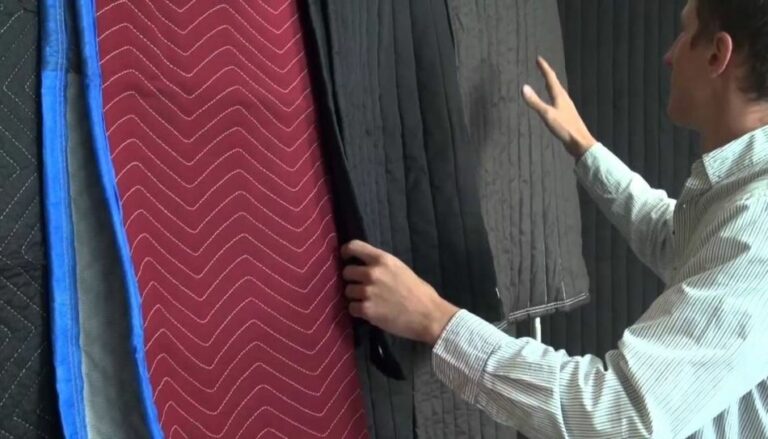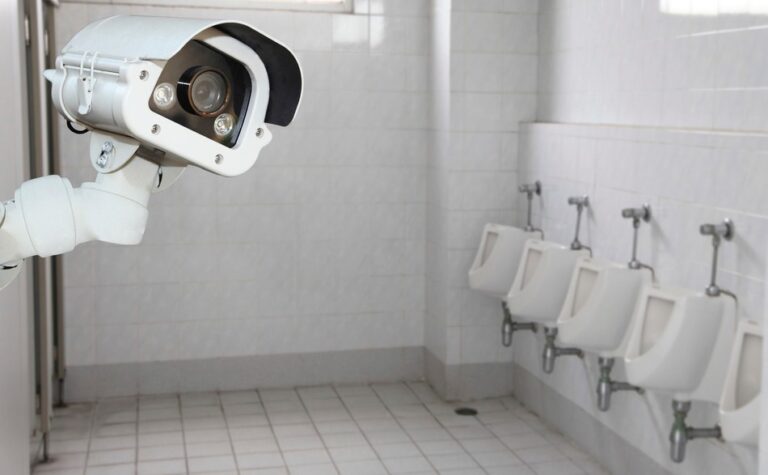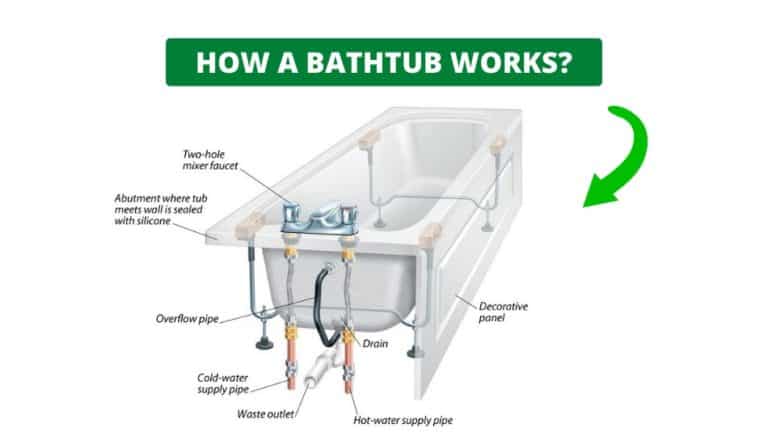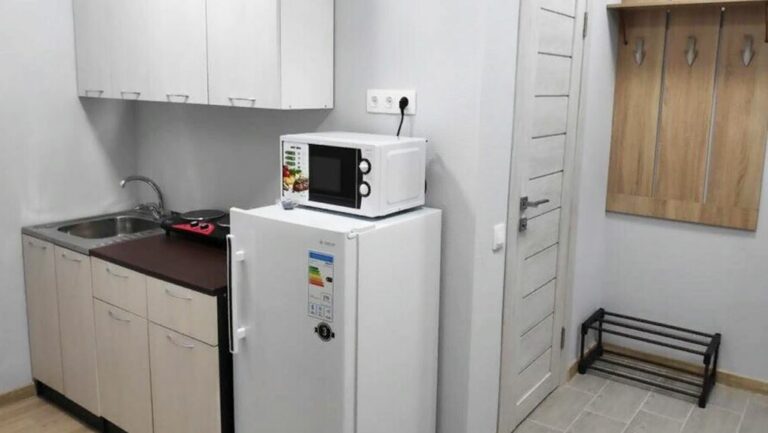Ceiling Fan In The Kitchen – Yes or No?
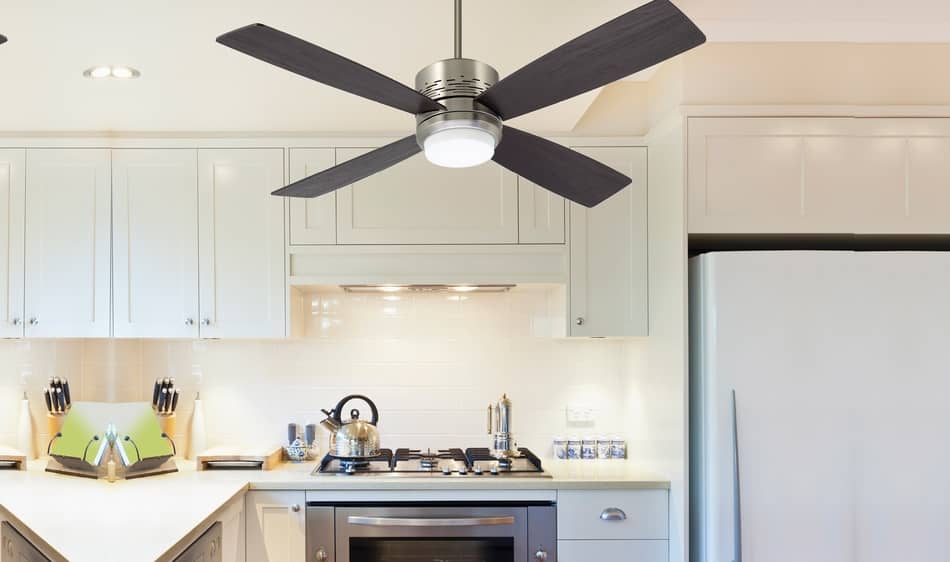
If you’re not a fan of the heat, installing a ceiling fan in the kitchen sounds like a great option for you. But before you decide to install one, you should be aware of a few things that come into play. First thing is to consider height restrictions and how a fan would blend in with the rest of your kitchen cabinets. You should also think about your lighting fixtures and if the ceiling fan will fit next to them.
Because of the natural heat during the summer and the overall warmth made during cooking, installing a ceiling fan makes sense. In this article, we’ll talk about whether it is a good idea to install a ceiling fan in the kitchen and its benefits. So, let’s start!
Table of Contents
Should You Put Ceiling Fan in the Kitchen?
So Should You Put Ceiling Fan in the Kitchen? Installing a ceiling fan in the kitchen is the preferred option if you’re cooking regularly and live in a warmer climate. The ceiling fan, regardless of the size of your kitchen, will maintain a comfortable temperature. Temperatures in the kitchen can get high as well as an unwanted odor that is created during cooking.
Some people also wonder if installing a ceiling fan would remove their cooking smell in the kitchen. This question is mostly asked by people whose kitchens aren’t ventilated properly because of various reasons, such as poorly installed vents or no vents at all.
Expert Explains:
If your kitchen wasn’t designed with proper airflow circulation and ventilation from the very beginning, you should consider installing a ceiling fan. This still doesn’t guarantee that the fan will be able to get rid of all the smells from the kitchen with no preinstalled ventilation. However, the fan will for sure help.
Here is our choice of the great ceiling fan on Amazon.
Tip! If you want to avoid purchasing and installing the fan, try opening your windows during and after you cook to see if that helps. This should work pretty well, especially if you have large windows.
If you are interested, you can also read; How To Connect Air Conditioner To Wifi?
This video shows a homeowner giving her opinion on having a ceiling fan in the kitchen and her experiences with it. It’s short and useful, so if you want firsthand advice, go ahead and watch it.
The Advantages of Kitchen Ceiling Fans
There are several advantages to installing a ceiling fan in your kitchen. Ceiling fans provide a fantastic and less expensive home circulation option that will help your energy expenses to be lower. Other than that, here are some other advantages of kitchen ceiling fans:
- Cooling Benefits– ceiling fans maintain a comfortable temperature in the kitchen.
- More Fresh Air – they circulate the air in the kitchen and give a lot of new fresh air in the room.
- Remove Cooking Smells – the cooking smell that is created is removed from the kitchen area.
- Dispelling of Insects – flying insects, such as flies, are kept away by the continuous propeller rotation of ceiling fan.
- Reduced Energy Costs – the fan keeps the kitchen cool in one of the most cost-effective ways. The ceiling fan may not be sufficient in keeping the kitchen cool on really hot days, but it is more than enough to keep you cool on days when you need a breath of fresh air. Even on hotter days, you can have the ceiling fan turned on along with the air conditioner. That way, you can put off turning the AC on for a while, which will save you electricity.
Tips How To Choose And Install A Ceiling Fan In The Kitchen
Before you decide to buy a kitchen ceiling fan you should consider a few things that are really important such as:
- Make sure there is a lot of space for your ceiling fan. When picking a location for your ceiling fan, be sure that the fan’s blades do not collide with any overhanging cupboards, cabinet doors, or light fixtures in the kitchen.
- Choose the right ceiling fan model for your kitchen. We suggest visiting two or more showrooms and examining the different models and types of ceiling fans. Here are the two main types:
- Retractable blade fans– they are usually preferred by people with minimalist taste and aesthetics preferences. That’s because retractable ceiling fans keep your room cool when it’s hot, but when you don’t need them, you can keep them out of sight by retracting them.
- Traditional ceiling fans– these types of ceiling fans are far inferior to retractable blade ceiling fans when it comes to ventilation efficiency, but they still ventilate the room pretty well. They can look especially nice if you find a design that fits well with your interior.
Some fans even have a built-in light. Those models save you space because they can serve both purposes.
- Look for settings and features of the fan. Before purchasing a fan it’s important to look at its functions and additional elements such as speed adjusting, seasonal settings, and does it come with remote control.
- Check the airflow rating of the fan. Airflow represents the maximum amount of air a fan can move. In comparison to a fan with a low airflow rating, a fan with a high airflow rating would do a much better job. So, if you can, pick one that can offer better air ventilation.
- Is the fan powered by an AC or DC motor. AC motors are driven by an alternating current and are more common. DC motors need less energy to operate and they run more silently.
Ceiling Fan Functionality
The kitchen is known to be a place of action. The action, also known as cooking, creates additional heat and food smells. That’s why a ceiling fan’s purpose is to keep your room cool and to remove any nasty smell. Ceiling fans with long, sharply angled blades do a better job with air circulation than fans with short and wide blades. You should also pay attention to the number of blades on the fan. Fans with five or fewer blades typically circulate more air.
Ceiling fans with a higher Energy Star rating cost 20% to 60% less to run, depending on whether they contain a light fixture installed or not. An energy star rating tells you also how efficient a model is in comparison to other models of the same size. More stars mean more efficiency and less power spent.
That’s why ceiling fans with higher energy star ratings are cheaper to operate than those with no Energy Star labels. For kitchen use, you should purchase something with a CFM rating of at least 5,000. CMF stands for cubic feet per minute and measures the volume of air, in cubic feet, for each minute it moves. If you want a very efficient fan, try to find one with a rating of more than 6,000 for your kitchen use.
It’s also important to pay attention to the sizing of the ceiling fan. Your ceiling fan won’t work well if it’s the appropriate size for the room. Therefore, measure your kitchen and see what the right fan size is. Here is a guide:
- Kitchens under 75 square feet need fans from 29 to 36 inches big.
- Kitchens from 76 to 144 square feet need fans from 36 to 44 inches.
- Kitchens from 145 to 224 square feet need fans from 44 to 50 inches.
- Kitchens from 225 to 400 square feet need fans from 50 to 54 inches.
- Kitchens bigger than 400 square feet need fans over 6o inches.
Other than measuring, it’s really important to have enough space in your kitchen for fan blades to operate normally. When placing the ceiling fan, be sure that nothing is in the way of the rotating blades.
Reduce Energy Bills By Using A Ceiling Fan
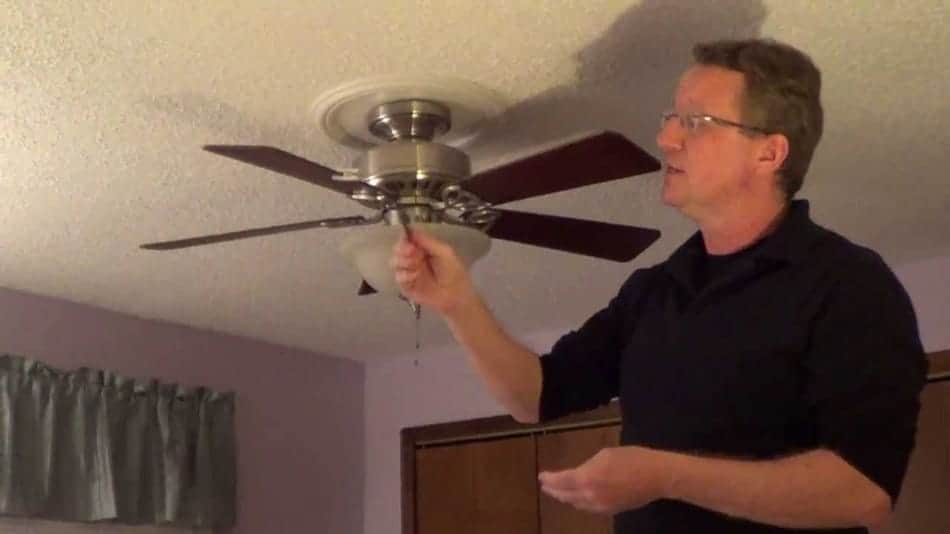
A good and quality ceiling fan can save you energy which leads to smaller electricity bills. Because it consumes less electricity than a heater or air conditioner, a ceiling fan saves you money while still keeping your room fresh. Ceiling fans don’t really cool the air, but they do generate a wind chill effect that creates a comfortable environment.
The downdraft of the ceiling fan is created by the spinning of fan blades that force the air downward. If you live in a place where it doesn’t get super-hot, you should definitely get yourself a ceiling fan. That will be more than enough. On the other hand, if you live in a hotter area, combining a ceiling fan and air conditioner is the ultimate solution that will save you up to 40% on your power bills.
Some ceiling fan models even have a reverse function that creates a draft going upwards. That type of fan warms up the place by mixing cold and warm air and pushing the warm one downward. This can also help save around 10% during the winter on heating expenses.
Downsides Of Having A Ceiling Fan In the Kitchen
Now that we have named many great things a ceiling fan in the kitchen can provide, we will point out a few downsides so you can make a well-informed decision on whether you want to install one for yourself. Here are some:
1. Installation Could be Tricky
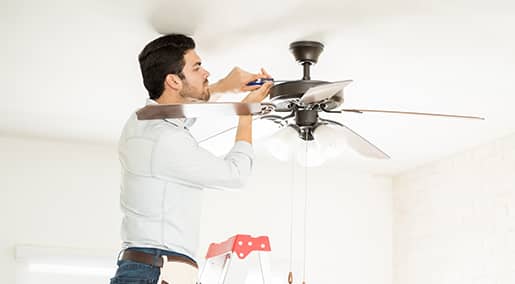
It is crucial to have power wired through your ceiling in order for the ceiling fan to work. You may need to draw electricity from your attic or some other space over your kitchen to make this happen. This is generally a project that requires the services of an electrician.
Ceiling height is also a factor because ceiling fans must typically stay 7 to 8 feet over people’s heads. If you have high ceilings, though, there is an option to install a rod of acceptable length that the ceiling fan is going to be attached to. This process usually includes taking many measurements, but it’s completely worth it.
2. Limited Reach
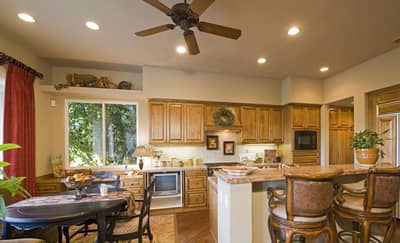
Ceiling fans, compared to air conditioners, have a limited range of motion. They keep you cool when you’re standing next to them, but if you walk a few feet away from where your fan is situated, you may no longer notice their impact that intensely, particularly in hot spaces like kitchens.
3. Problem With Noise
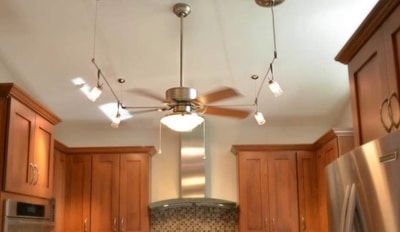
When fans aren’t placed properly, they make irritating noises that are difficult to get rid of. This can be avoided by having the fan installed by a professional. Furthermore, even when they are correctly mounted, fans still might produce odd sounds, making the kitchen an unpleasant place to be in. To get rid of these unpleasant sounds, you’ll need to do some maintenance work.
For those who want to know more, read How Do Ceiling Fans Work?
FAQ: People Also Ask
1. Is a Ceiling Fan In The Kitchen A Good Idea?
Ceiling fans provide several advantages such as ventilation, odor elimination, and dispelling of insects. They also help with cooling and heating. On the other hand, they are difficult to install. It’s up to you to judge if getting them is a good idea or not.
2. What Rooms Should Have Ceiling Fans?
Spaces like sunrooms, converted attic spaces, places with vaulted ceilings, and any rooms with bad airflow and temperature management would get a lot of use from a ceiling fan.
3. Should Ceiling Fan Be Centered In Room?
Although many people install ceiling fans centrally in their rood, the most effective placement is at the place where people gather the most. A ceiling fan placed in the center of a smaller room can work well, but for bigger rooms, positioning it immediately above the seating area is the best option.
Final Thoughts
In this article, we have addressed the positive and negative sides of owning a ceiling fan and whether or not you should install one in your kitchen. We have also explained that installing a fan in the kitchen helps air circulation and gives an overall impression of a cooler environment.
Other than those, other positive functions of the ceiling fan, such as odor elimination and dispelling of insects, have been brought up. We hope that this post has given you detailed enough information to help you decide whether or not your kitchen needs a ceiling fan. Thank you for taking the time to read this, and if you have any questions, please let us know!


